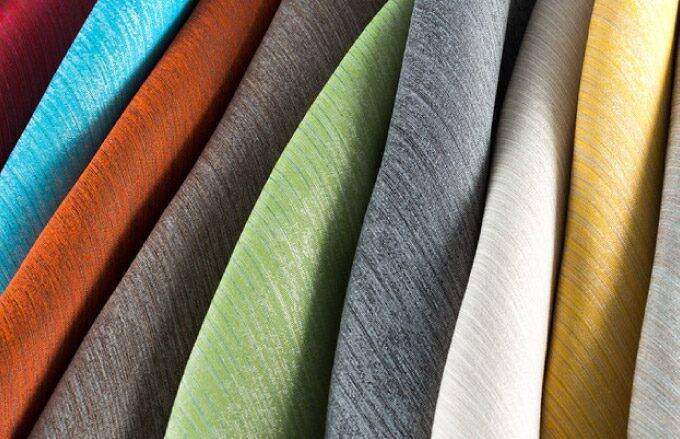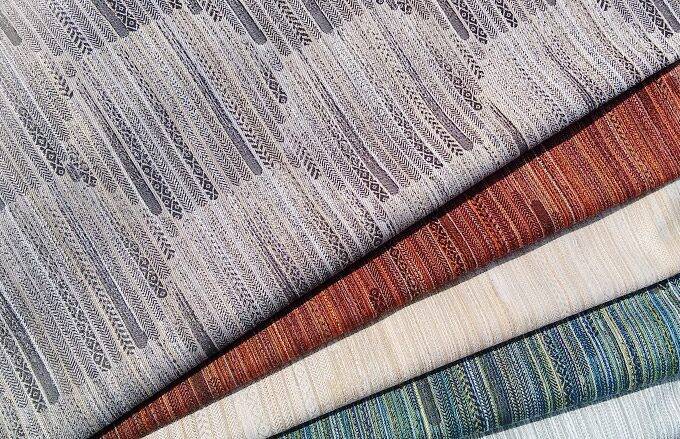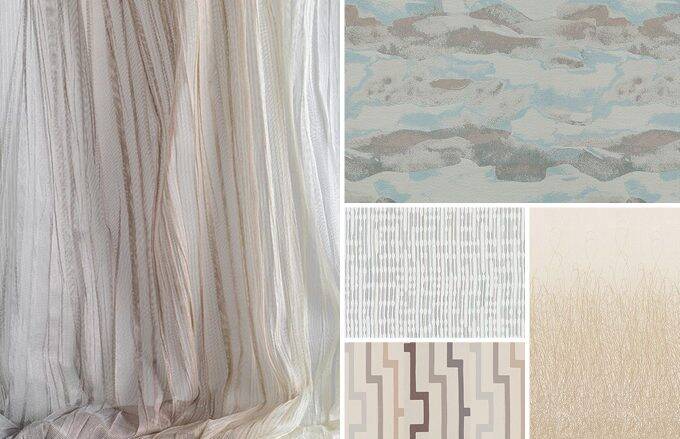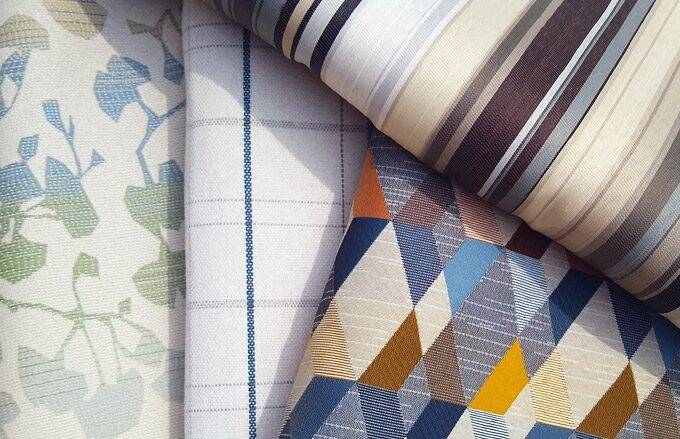July 14, 2020
Antimicrobial Fabrics for Hospitality—Your Questions Answered

These days you don’t have to be a germaphobe to be concerned about the impact of microbes and pathogens. COVID-19 has forever changed the hospitality industry. We understand completely.
With 80 years’ experience in the healthcare market, we know our germs, particularly when it comes to textiles and interior products for hospitals and healthcare facilities. We would like to share with our hospitality design partners best practices that can be implemented in hotels, specifically: antimicrobial fabrics, disinfectant cleaners, and increased laundry protocols.
What makes a fabric antimicrobial?
Antimicrobial fabrics and textiles are fiber-based substrates to which antimicrobial agents have been applied at the surface or incorporated into the fibers, rendering a product that kills or inhibits the growth of microorganisms. The most prevalent technologies for creating antimicrobial fabrics are heavy metals, Silane (Si-Quat), and Chlorine Retentive/Regenerative. Learn more about how antimicrobial technology works.
At Standard Textile we utilize heavy metals (silver or zinc) and Silane technologies in our antimicrobial fabrics. For example, our Bezel and Matrix fabrics are piece dyed, and have the Silane added in the dye bath. These fabrics (among many others) also feature our exclusive Impact Technology®, which embeds its protection within the fibers of the fabric and makes the fabric resistant to flames, stains, splashes, and microbial growth.
Impact Technology® in action.
Impact Technology® offers broad-spectrum antimicrobial protection to inhibit the growth of odor- and stain-causing bacteria, fungi, algae, and yeasts. Impact Technology® has been tested against representative gram-positive and gram-negative organisms to 50 industrial wash cycles, certified by an independent testing agency.
This finish can be applied to just about any fabric, so you don’t have to sacrifice style for function when specifying antimicrobial fabrics. We offer a wide variety of colors, textures and patterns. See for yourself!
In recent discussions with our clients, here are some frequently asked questions about antimicrobials. We hope this information will help you make informed decisions as you specify fabrics and products.
Frequently Asked Questions
Are there more cost-effective ways than adding silver to fabrics to make them antimicrobial? Will silver fabric technology be more budget-friendly now that demand will be higher?
Yes, there are alternatives to silver for antimicrobial properties. The specific application, product use, laundry specifications, durability requirements, and cost constraints will determine the exact/best technology. There are more cost-effective alternatives to silver, but it’s important to note that if those elements are not inherent in the fiber or if they have to be added, there will be an additional cost per yard.
Could you share what your thoughts on which materials people may be looking to select in hospitality, retail, restaurants, etc. in a post COVID-19 world? What might change in the way materials and fabrics are designed moving forward?
In a post COVID-19 world, we believe there will be shifts for specifying fabrics, with an increased focus on fabric durability during cleaning and increased laundry processing. We anticipate both increase in demand antimicrobial/antiviral fabrics, as well as bleach-cleanable fabrics. For upholstery, adding a barrier between the cushion and fabric will also help to improve the durability and longevity.
If a client is specifically looking for bleach-cleanable products, how would you address that concern? Are antimicrobial features sufficient?
When a client is looking for bleach-cleanable products, the key is to see which tests or recommendations manufacturers list for bleach ratios. Also, check to see which cleaners your client uses, as those cleaners might work differently than bleach. Some antimicrobial fabrics might lose their efficacy when bleach is used. You will need to ask if the cleaning process was tested or if they need to do a test with bleach to ensure antimicrobial properties are still maximized.
Fabrics from Left to Right: Manchester in Glow, Galaxy in Night, Burst in Graphite, Cubism in Mountain Peak, Flux in Sand, Fuzzy in Flannel, and Wink in Hilight.
Do you have specific recommendations for cleaning and disinfecting?
Knowing how to care for your upholstery is essential in keeping your fabrics looking their best. It is critical to ensure you’re using tested and approved disinfectants and cleaners on all of your hotel’s surfaces. Check out our recommendations on fabric and upholstery cleaning procedures by pattern and content type.
Are natural fibers going to harbor less microbes than synthetic fibers?
Although some “natural” fibers are marketed as having “better” antimicrobial performance, there is little difference between untreated synthetic and natural fibers in actual controlled microbial growth studies. Synthetic fibers may have more microbial growth but natural fibers do have some growth.
Do the heavy metals kill the microbes or do they just inhibit the growth of the microbes?
Heavy metals for the most part tend to work through the leaching process, which will inhibit the growth and spread of microbes as the antimicrobials (heavy metals or quats) target and physically rupture the cell membrane. Pay attention to any claims associated with a fabric. If the fabric manufacturer says the fabric will kill microbes on contact, the fabric will need to be registered with the EPA.
Can we apply a single finish to our fabrics and expect that to work?
Applying the same finish to every fabric is not the answer. The application of the fabric and its function will determine how it needs to perform, including consideration of whether and how much it will be washed or cleaned with a disinfectant.
Hospitality is design- and custom-driven. How do we find antimicrobial or bleach-cleanable fabrics that are FR tested and approved, in stock, and at the right price point that meet these high standards? How do you foresee working with custom fabrics moving forward with these properties in stock?
We understand that price points and lead times are crucial in hospitality, and that the design must fit the application. We offer custom digital printing options (for example) on basecloths that inherently have antimicrobial, soil/stain, and splash properties, so no additional finish is needed. We are also looking at adding more stocked fabrics that are more hospitality/design-forward, but that are already treated with antimicrobial properties and can hold up to commercial launderings.
What is the difference between cleaning vs. disinfecting? Also, what should I use to clean fabrics that won’t damage them?
Cleaning is the removal of liquid and food contaminants while disinfecting is the elimination/killing of microorganisms that can survive in the presence of moisture and food sources.
Ensuring your fabrics can hold up to the most common disinfectants is critical. Check out the results of a recent upholstery performance test to see how different chemicals performed on Standard Textile’s fabrics.
Block-on-Block Top Cover with Integrated Bed Scarf in Songbird.
What are some items we see that can be improved or changed in a hotel room moving forward?
For products that can’t be laundered, such as chairs or headboards, designers must ensure there are antimicrobial or bleach-cleanable performance attributes. For items that can be laundered, consider durable fabrics that can hold up in commercial laundering.
Other considerations include:
Bed Scarves – Consider incorporating an alternative to a traditional bed scarf right in the top cover for easy laundering while maintaining the design component of the scarf.
Top Covers – We anticipate a shift to all white on the top of the bed with the improved ability to withstand more laundry cycles.
Window Treatments – We foresee a shift to roller shades. Not only are roller shades effective for heat and light blockage, there are many antimicrobial shade options. Plus, roller shades can be cleaned with bleach and other disinfectants. We also see designers and properties considering whether draperies can be changed more often for laundering or if the fabrics can be sprayed or cleaned.
Upholstery/Box Spring Covers – Look for upholstery and box spring covers that are bleach-cleanable, antimicrobial, and have moisture barrier properties that can withstand a variety of disinfectants when cleaning.
Wallcoverings – Wallcoverings are an excellent alternative to a painted wall or wallpaper. Many of our wallcovering substrates are easy to wipe down and are bleach-cleanable.
As always, our consultants are available to answer your additional questions and concerns.
Related Content

High Performance Fabrics for Today’s World: Crypton® C-Zero Plus Fluorine-Free Fabrics
Standard Textile Interiors is excited to partner with Crypton® to offer six new and exclusive patterns with C-Zero Plus with moisture barrier, an exceptional fluorine-free stain-resistance performance technology designed to repel liquid and water-based stains, while providing odor resistance.

Fabric Trend Capsule: 100% Trevira CS Fabrics
Trevira CS textiles have a luxurious hand, high color brilliance, light fastness, abrasion resistance, and are easy to care for. Trevira CS fabrics are finely woven with flame retardant fibers to create comfortable and safe textiles. Let’s take a look at what makes Trevira textiles so unique.

The Formula for High-Performance Fabrics: Alta™ Healthcare Technology
Standard Textile Interiors second collection with with Applied Textiles Alta™ Healthcare fabric technology offers antimicrobial, water-based fabric technology with moisture barrier. It is designed to deliver the correct level of protection for each application, whether it’s lighter-duty administrative areas or heavy-duty and high-traffic.